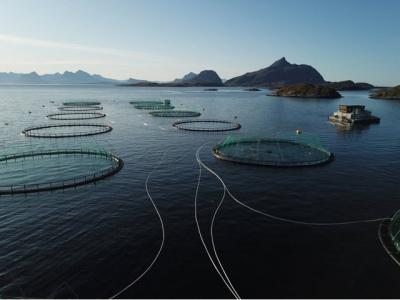Norway Royal Salmon sounds the alarm over potential ISA outbreak

Norway Royal Salmon ASA has reported a potential outbreak of infectious salmon anaemia in its Dønnesfjord operating area.
The NRS farming locations Næringsbukta, Klubben and Børfjord have reported a potential outbreak of infectious salmon anaemia, a viral disease that causes severe anaemia, severe accumulation of fluid in the body cavity and internal organ haemorrhages.
The company is waiting to confirm the presence of orthomyxovirus, the causative agent of the disease. As the outbreak has not been officially confirmed, it is difficult for NRS assess any potential losses or welfare impacts. In a statement issued on 6 July, the company said it continues to work to identify the extent of the infection and potential economic losses.
Infectious Salmon Anaemia (ISA)
What Is It?
Infectious salmon anaemia (ISA) is an infectious viral disease of Atlantic salmon (Salmo salar L.). The disease was first reported in Norway in 1984, but has since been reported in Canada, the USA, the Faroe Islands, Ireland and Scotland. The outbreak of ISA in Scotland in 1998-99 was successfully eradicated. Atlantic salmon is the only susceptible species known to develop clinical disease, but ISA virus can replicate in rainbow trout (Oncorhynchus mykiss) and sea trout (Salmo trutta L.).
Where and When Might it Occur?
In Norway, cases of ISA have occasionally been reported in fresh water farms but generally in hatcheries which use part sea water. The overwhelming majority of cases occur in farmed fish in sea water. The virus has been detected in wild fish but cases of clinical disease have only been reported in farmed fish.
The disease has also been detected in the UK, Canada and Chile.
Diagnosis
Cases of clinical disease may be characterised by severe anaemia, ascites (accumulation of fluid in the body cavity), haemorrhage in internal organs and darkening of the liver. Fish also tend to appear lethargic with pale gills and blood spots in the eyes.
Indirect fluorescent antibody test (IFAT) showing the presence of ISA virus in the kidney cells of an Atlantic salmon.
The causative agent of ISA is an orthomyxovirus. The presence of the virus is confirmed by isolation and identification techniques, indirect fluorescent antibody test (IFAT) and reverse transcriptase polymerase chain reaction (RT-PCR).
Control
The virus can be transmitted through water, but the highest risk factors for spread of disease are movement of live fish, discharge of untreated blood and contact with infected vehicles and equipment.
ISA is exotic to the European Union. It is a notifiable disease under UK legislation and a List I disease under European Directive 91/67/EEC. Under EU legislation action must be taken to contain any outbreak, to eradicate sources of infection and to protect other fish farms by:
Compulsory slaughter and disinfection of infected farms
Strict movement controls on suspect farms
Placing farms in the vicinity of an outbreak under surveillance
Treatment
There are no treatments for ISA and no licensed vaccines in the EU. Vaccine trials in Canada have yielded equivocal results.
Có thể bạn quan tâm
 Why sea lice prevention is better than cure
Why sea lice prevention is better than cure A new study confirms that preventing sea louse infestations has key advantages over other strategies and identifies the most promising preventative methods.
 Pioneering pH sensor secures vital funding
Pioneering pH sensor secures vital funding A calibration-free pH measuring device, which is applicable for sectors including aquaculture, is set for commercialisation having secured significant seed
 Turning the phage on antibiotic therapy
Turning the phage on antibiotic therapy In the review, the researchers explore the benefits and constraints of bacteriophage therapy, identifying the potential treatment opportunities